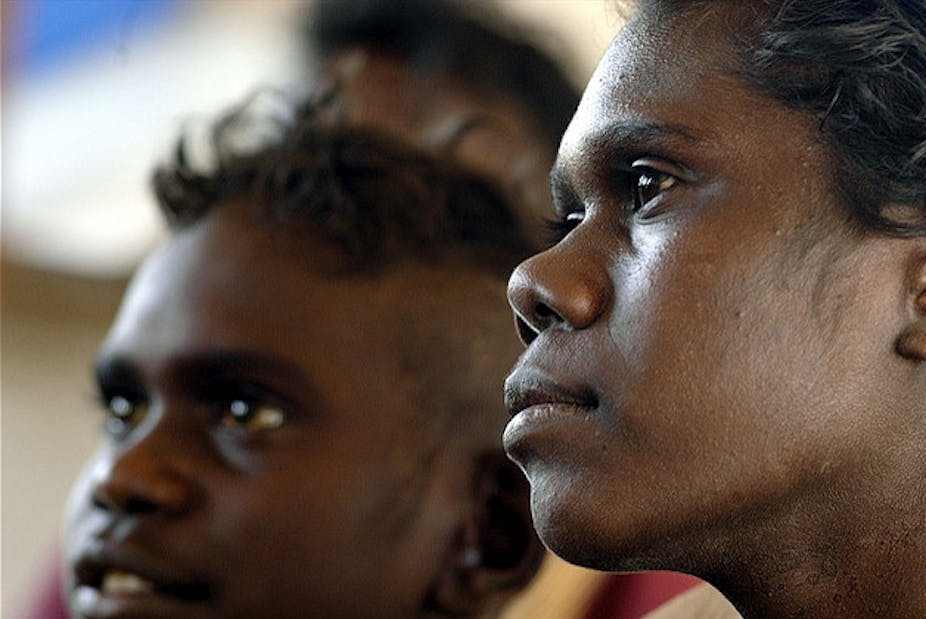How can anti-smoking campaigns be targeted more effectively at Australia’s Indigenous youth? It’s a good question, and one that, as yet, has proven difficult to answer.
Almost half of all Aboriginal and Torres Strait Islander Australians aged 14 years and older smoke cigarettes, compared with one-fifth of non-Indigenous Australians.
This has contributed to one of the largest gaps in life expectancy throughout the world, with Aboriginal and Torres Strait Islander people dying around ten years earlier than non-Indigenous Australians.
Aboriginal and Torres Strait Islander young people are at a significant risk of premature death and smoking-related illnesses such as heart and lung disease, cancers and vascular diseases, among many other conditions.
The dangers of tobacco use, among Indigenous youth in particular, are amplified by the “normalisation” of smoking as part of the usual environment.
In an attempt to eliminate these differences in death and illness, the Council of Australian Government (COAG) in 2008 pledged A$1.6 billion to Closing the Gap on Indigenous Disadvantage initiative, of which anti-smoking programs were an important part.
These programs were built on existing campaigns and included mass media advertising, culturally tailored resources (such as pamphlets, posters, calendars and DVDs), smoking cessation and reduction programs, and training workers to support these programs through health centres and communities.
My colleagues and I set out to examine these COAG initiatives and other programs from around the world where culturally tailored tobacco prevention messages were assessed as part of public policy or research.
We wanted to combine all the evidence to assess what did and didn’t work, along with the gaps where evaluations were needed.
But we found no meaningful evaluations of an Australian youth tobacco prevention program. Although the Australian government has conducted some evaluations of Indigenous tobacco prevention programs, they are of poor quality.
Effective evaluations need to include a control population with matching participant characteristics, baseline and follow-up data collection for comparison. Evaluations should look at multiple communities before and after the program is carried out and these results should be published and made available to the general public, which to date has not happened.
Internationally, we found only three published studies: two in American Indian populations (available here and here) one in a New Zealand Māori population. The three studies exposed some potentially dangerous findings, with two studies showing no evidence of any effect following the tobacco prevention program.
One study showed reduced levels of smoking among youth in the control population, meaning the participants who received the tailored tobacco prevention program did worse than the youth who received nothing.
For this study 21% of people in the tobacco prevention program reported trying tobacco use compared to 14% in the control population.
The review is published in the Cochrane Database of Systematic Reviews.
A potential explanation for these results include acts of rebellion, where young people deliberately start smoking or report current smoking simply because they are being asked not to do it.
Another possible explanation of why these studies failed is that tobacco prevention programs should be delivered to youth before they even start considering tobacco use. In the non-Indigenous population this is usually around the age of ten to 12 years.
But we know Indigenous youth start smoking at a much younger age, so the programs are most likely being applied too late.
Also, an incorrect match between the program components such as DVDs, interactive workshops, community events, and the age and gender of the actual youth could also be contributing to the unsuccessful results.
We need a well-conducted evaluation of Australian COAG-led tobacco prevention initiatives for Aboriginal and Torres Strait Islander youth.
Although some may say that any initiative without an evaluation of how well it works is better than nothing, we can see from our study that this is not the case. We could be doing more harm than good by continuing to run these programs without conducting good quality evaluations that run alongside them.
Continuing to invest money into ineffective programs means we cannot redirect funds into the initiatives that are most likely to help Aboriginal and Torres Strait Islander youth have the best possible chance of a long and healthy life, through being smoke-free.

